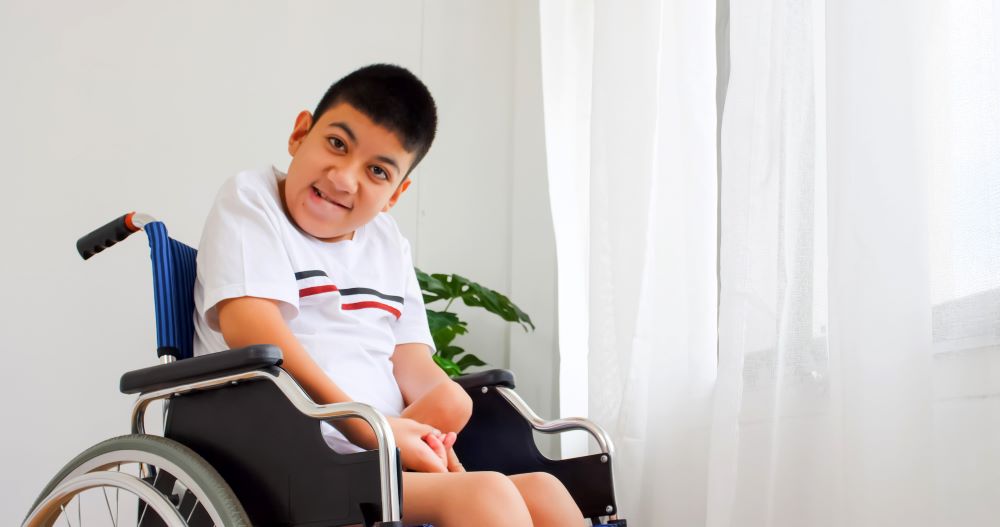Last Updated on November 27, 2024 by Michelle Wan
Spastic cerebral palsy (CP) is the most common type of cerebral palsy, affecting approximately 70–80% of individuals with CP. It is characterized by increased muscle tone, leading to stiffness, difficulty with movement, and challenges in everyday activities. For many families, spastic cerebral palsy is the result of a preventable birth injury, making it essential to understand the causes, symptoms, and available resources to support affected children.
In this article, we’ll explore the connection between birth injuries and spastic CP, its symptoms, treatment options, and how families can seek justice and support.
What is Spastic Cerebral Palsy?
Spastic cerebral palsy is a neurological condition that affects the brain’s ability to control motor function. The condition arises when specific parts of the brain responsible for muscle movement and coordination are damaged, often due to a lack of oxygen or trauma during childbirth.
Key Characteristics of Spastic CP:
- Hypertonia (Increased Muscle Tone): Stiff, tight muscles that make movement difficult.
- Limited Range of Motion: Difficulty stretching or moving muscles fully.
- Contractures: Permanent shortening of muscles or joints due to prolonged stiffness.
- Mobility Challenges: Trouble walking, standing, or performing coordinated movements.

How Birth Injuries Can Cause Spastic Cerebral Palsy
Birth injuries are a leading cause of spastic cerebral palsy. The following factors during labor and delivery can result in brain damage that leads to CP:
Lack of Oxygen (Birth Asphyxia):
Prolonged oxygen deprivation during delivery can damage brain cells, particularly in areas that control movement and coordination. Conditions like umbilical cord prolapse or a delayed cesarean section often contribute to birth asphyxia.
Trauma During Delivery:
Excessive force used during difficult deliveries, such as with forceps or vacuum extractors, can cause brain trauma.
Infections:
Maternal infections, such as chorioamnionitis, or infections in the newborn, like meningitis, can lead to brain inflammation and injury.

Premature Birth or Low Birth Weight:
Babies born prematurely are more vulnerable to brain injuries due to underdeveloped organs and reduced oxygen supply.
Medical Negligence:
Failing to monitor fetal distress, delay in performing necessary medical interventions, or mishandling delivery can lead to preventable brain injuries.
Symptoms of Spastic Cerebral Palsy
The symptoms of spastic CP vary depending on the severity of the brain injury and the areas of the body affected. The condition is divided into three subtypes:
Spastic Diplegia:
Primarily affects the legs, causing stiffness and difficulty walking or standing. Children may walk with a “scissor gait,” where legs cross at the knees.
Spastic Hemiplegia:
Affects one side of the body, such as the right arm and leg. The affected side may appear smaller or weaker compared to the other.
Spastic Quadriplegia:
The most severe form, impacting all four limbs, the torso, and the face. Often accompanied by other challenges, such as intellectual disabilities, seizures, or speech difficulties.

Diagnosing Spastic Cerebral Palsy
Early diagnosis is crucial for creating an effective treatment plan. Common diagnostic steps include:
Developmental Monitoring: Regular check-ups to track motor milestones like sitting, crawling, or walking.
Imaging Tests: MRI or CT scans to detect brain damage.
Neurological Assessments: Evaluations of muscle tone, reflexes, and motor skills.
Treatment Options for Spastic Cerebral Palsy
While spastic CP has no cure, various treatments and therapies can improve a child’s quality of life. A multidisciplinary approach is often recommended, combining medical, therapeutic, and adaptive strategies.
Physical Therapy
Focuses on improving mobility, balance, and strength. This includes stretching exercises to reduce muscle stiffness and contractures.

Occupational Therapy
Helps children develop fine motor skills needed for daily activities like dressing, eating, and writing. It may involve training with adaptive devices.
Speech Therapy
Addresses challenges with communication and swallowing. Incorporates augmentative and alternative communication (AAC) tools for nonverbal children.
Medications
- Muscle Relaxants: Medications like Baclofen can help reduce muscle stiffness.
- Botox Injections: Used to temporarily relax overactive muscles.
Assistive Devices
Wheelchairs, walkers, braces, and orthotics improve mobility and independence. Adaptive seating systems support posture.

Surgical Interventions
Procedures such as selective dorsal rhizotomy (SDR) may be performed to reduce muscle spasticity. Orthopedic surgeries address joint deformities or contractures.
Supporting Families Affected by Spastic Cerebral Palsy
Caring for a child with spastic CP requires significant emotional, physical, and financial resources. Families often face challenges in accessing necessary therapies, adaptive equipment, and educational support. The following resources can help:
Educational Support:
Individualized Education Plans (IEPs) ensure children receive tailored learning accommodations in school. Early intervention programs provide developmental services for children under three.
Financial Assistance:
Government programs like Medicaid or Supplemental Security Income (SSI) can help cover medical and therapy costs. Nonprofit organizations such as United Cerebral Palsy (UCP) offer grants and resources for adaptive equipment.

Legal Support:
If spastic CP resulted from medical negligence, families may be eligible for compensation to cover long-term care costs. Learn more about how birth injury compensation is calculated.
How Thomas & Wan LLP Can Help
If your child’s spastic cerebral palsy was caused by a preventable birth injury, you don’t have to face this journey alone. At Thomas & Wan LLP, we specialize in birth injury cases, helping families secure justice and the financial resources needed to provide the best care for their children. Our team works tirelessly to investigate cases of medical negligence, ensuring you receive the compensation your family deserves.
Spastic cerebral palsy is a life-altering condition that often stems from preventable birth injuries. Understanding its causes, symptoms, and treatment options empowers families to advocate for their child’s needs and access the necessary resources for support.
If you suspect medical negligence played a role in your child’s condition, contact Thomas & Wan LLP today for a free consultation. Together, we can help secure the future your child deserves.




